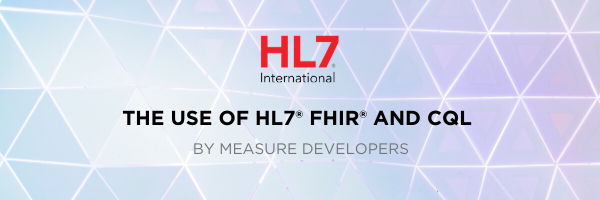
Since the fall of 2017, electronic Clinical Quality Measures (eCQMs) logic has been written using Clinical Quality Language (CQL). With the introduction of CQL, the eCQMs included in the CMS federal programs had to be translated from Quality Data Model (QDM)-based expression logic to CQL.
Though CQL provides more flexibility in expressing measure criteria within the logic that allows measure developers to include greater specificity and precision within the measure requirements, this did not result in a direct translation process, as new attributes and timings were made available. What this means is that clinical workflow and input are perhaps more important because CQL is able to convey these nuances, whereas the QDM-based logic expressions were limited. CQL can also be used to develop Clinical Decision Support (CDS) rules and can reuse logic from measures in those CDS rules.
When composing measures using the CQL syntax, the QDM is still used in conjunction with CQL as the means to characterize required data elements within the measure logic. This conceptual model defines what type of clinical data is needed to satisfy the measure requirements. Therefore, the QDM is still very much a part of electronically specified measures, which is incorporated into the logic definitions written using CQL.
There are numerous tools used to author and update eCQMs, including:
- Measure Authoring Tool (MAT)
- The MAT is a web-based tool developed to author eCQMs by creating CQL expressions using the conceptual model of QDM as the foundation. The MAT produces multiple components within the eCQM package, including a human-readable document, a Health Quality Measure Format (HQMF) eXtensible Markup Language (XML) file, a CQL file, and an ELM XML file.
- Value Set Authority Center (VSAC)
- The National Library of Medicine maintains the VSAC, a repository and authoring tool for public value sets that can be directly linked to within the MAT.
- Value sets are lists of codes and corresponding terms, from NLM-hosted standard clinical vocabularies (such as SNOMED CT®, RxNorm, LOINC® and others), that define clinical concepts to support effective and interoperable health information exchange.
- Bonnie
- This tool is used to test eCQMs by creating synthetic test patients to assess whether eCQM logic functions as intended. These synthetic test cases are valuable, as they are able to determine if there are faults within the measure logic, as well as test edge cases to ensure the
- Atom
- This is a tool that is presently used to compose and use as a basic editor of measures using Fast Healthcare Interoperability Resources (FHIR®) and QI-Core extension. Information regarding FHIR standard and implementation guides can be found here. QI-Core can be located here, which will help provide information such as applicable US Core Profiles to define the elements, expressions, and terminology requirements to apply within the extensions in the Atom builder.
When developing measures using FHIR, a measure developer is required to build a profile for each data element, which must include all mandatory attributes (for example, status of procedure).
CMS recently published a presentation to assist those developing measures using FHIR, which can be accessed here. QI-Core replaces the QDM as the conceptual model used to structure and build a measure. A QDM to QI-Core mapping resource is available which will serve as the first step to transitioning measures into these new standards. The mapping resource assists measure developers with the translation of existing QDM categories, datatypes and attributes (e.g., Symptom) to the QI-Core equivalent (e.g., Observation). It’s important to note that this resource continues to evolve, adding relevant mappings based on newer versions of the QDM that are released which should allow measure developers to translate a measure more easily, even if it has been written using an older version of the QDM.
Though FHIR and QI-Core are still in testing and piloting phases, we expect to begin using these standards to develop eCQMs in the near future. Therefore, it’s important to begin building a knowledge base using the aforementioned resources.
Additional resources are available through HL7 Education on Demand and as well as in-person and virtual education.


.jpg?width=100&height=100&name=JAMIE%20LEHNER%20(002).jpg)